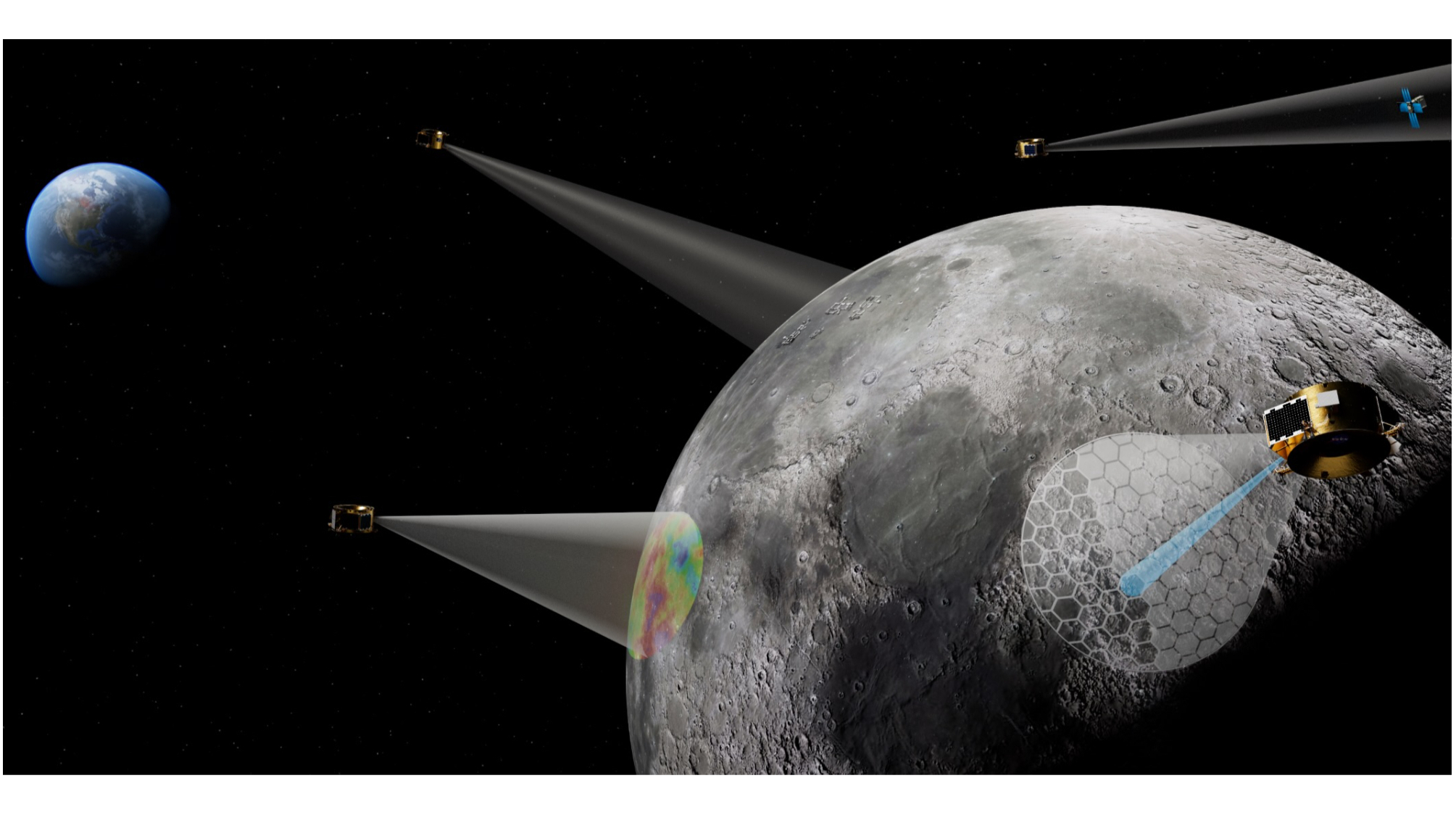UAE's ambitious asteroid mission will tour 7 space rocks
The as-yet-unnamed spacecraft will also carry a lander for a visit to an unusual asteroid.

The United Arab Emirates is targeting seven different space rocks with its ambitious mission to the main asteroid belt.
The mission was announced back in 2021, but now a poster set to be presented in June at the Asteroids, Comets, Meteors Conference in Arizona has revealed the specific targets for the mission, Ars Technica reports.
"The mission will launch in 2028 and visit 7 main belt asteroids, including 6 high-speed flyby encounters en route to a rendezvous with the asteroid 269 Justitia," according to the document, which details the design of the mission.
Photos: Asteroids in deep space
Here's the full list of targets:
- Flyby: 10253 Westerwald
- Flyby: 623 Chimaera
- Flyby: 13294 Rockox
- Flyby: 88055
- Flyby: 23871
- Flyby: 59980
- Rendezvous: 269 Justitia
After rendezvousing with 269 Justitia, the spacecraft will deploy a lander for an attempt to set down on the surface. Notably, only NASA's OSIRIS-REx and the Near-Earth Asteroid Rendezvous (NEAR) Shoemaker spacecraft and Japan's Hayabusa1 and Hayabusa2 probes have succeeded in soft-landing on an asteroid so far.
The target for the landing is another rarity. The roughly 33-mile-wide (53 kilometers) asteroid 269 Justitia has a reddish hue, possibly due to the presence of organic compounds called tholins, which are abundant on Pluto and other icy bodies in the outer solar system, Ars Technica notes.
Breaking space news, the latest updates on rocket launches, skywatching events and more!
Another paper on the mission's science objectives notes that the spacecraft will reach 269 Justitia in April 2034. If the asteroid formed in the outer solar system, the UAE mission could provide unique insight into bodies out beyond Neptune.
The overall science objectives are noted as understanding the origins and evolution of water-rich asteroids and assessing their potential use for resources.
The spacecraft will use solar electric propulsion for its six-year-long voyage and will use gravity-assist flybys of Venus, Earth and Mars on its journey.
The UAE will work with the University of Colorado, Boulder, as it did for the Hope Mars mission, the country's first interplanetary endeavor.
While the UAE's first moon lander was recently lost aboard ispace's Hakuto-R lander during a failed touchdown attempt, the Hope probe is still operating in Mars orbit and recently made an unprecedented survey of Deimos, the smaller of the Red Planet's two moons.
Follow us on Twitter @Spacedotcom and on Facebook.
Join our Space Forums to keep talking space on the latest missions, night sky and more! And if you have a news tip, correction or comment, let us know at: community@space.com.

Andrew is a freelance space journalist with a focus on reporting on China's rapidly growing space sector. He began writing for Space.com in 2019 and writes for SpaceNews, IEEE Spectrum, National Geographic, Sky & Telescope, New Scientist and others. Andrew first caught the space bug when, as a youngster, he saw Voyager images of other worlds in our solar system for the first time. Away from space, Andrew enjoys trail running in the forests of Finland. You can follow him on Twitter @AJ_FI.
-
Classical Motion They're prospecting. For metals. Even common metals are valuable in large bulk purity. How they intend to bring them here, is anybody's guess. And if you do get it here, where are you going to put it? The Moon? If it's metal, what will happen to our M field, if we try to put it in orbit? Would earth's M field and E fields.....allow it to orbit?Reply
Some get excited with asteroid mining, and the potential profit and adventure of it. Me too. Where do we put this stuff? How do we catch and hold it? So we can use it. Can our oceans catch them safely? How much is lost in re-entry? Do we cut them to certain mass and drop them from orbit?
I never heard or read that part. How temping could a valuable rock be? From what I've read, most are common metals. And rarity is no concern. What if one target turns out to be a high amount of a rare earth, or even better a combo of rare earths. As temping as could be, like in the movies. Would we go after it? Perhaps with that much value, we might refine and process on the Moon. Add a crater. And back to a shuttle fleet.
